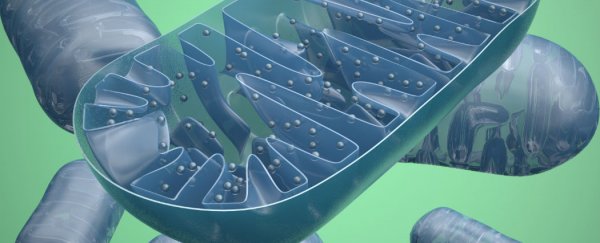A new technique to edit mitochondrial DNA has been tested on mice, and if replicable in humans, could help prevent mothers living with certain incurable disease from passing them onto their children, researchers say.
Mitochondria are tiny powerhouses found inside nearly all human cells, and are responsible for generating the chemical energy that allows our cells to perform many essential functions. For example, this energy enables communication between brain cells, and it allows our muscle cells to keep us moving around.
However, defects in these cellular components, which have their own DNA, can lead to a range of incurable conditions, known collectively as mitochondrial diseases.
While the diseases present differently in each individual, they can generally be characterised by symptoms such as poor muscle development and weakness; hearing, vision and other neurological impairments; learning disabilities; and heart, liver, gastrointestinal and respiratory diseases.
For thousands of women around the world living with one of these incurable diseases, having children is a gamble, as it's likely their defective mitochondrial DNA will be passed on.
Now, researchers at the Salk Institute for Biological Studies in the US have developed a technique to eliminate mitochondrial mutations from eggs or early embryos, while leaving the healthy mitochondria intact.
The proof-of-concept demonstration, which has been described in the journal Cell, could help prevent children from inheriting these chronic diseases.
The researchers used to two different enzymes - or nucleases - inside cells, which can be engineered to cut specific strands of nucleic acid, functioning kind of like 'molecular scissors'.
As Smitha Mundasad from the BBC reports, the team tested the "molecular scissors on mice with two different types of mitochondrial DNA (mtDNA). They were able to recognise and cut out disease-causing mtDNA in mouse embryos."
The mice offspring were born healthy and developed naturally into adulthood without any diseases, the researchers say.
"We might not be able to eliminate 100 percent of the mutated copies of mitochondrial DNA," said lead author Pradeep Reddy in a press release. "But you don't need to eliminate all of the mutated copies: just reducing the percentage significantly enough can prevent the disease in the next generation."
The team also successfully demonstrated their technique on defective human mitochondrial DNA, which had been inserted into mouse eggs.
Stem cell scientist Duscko Ilic from King's College London in the UK, who was not involved in the research, told the BBC that the group's method for correcting mitochondrial defects was a "technical masterpiece" but said it was unlikely to make it to clinical trials in near future.
"Replacing faulty genes in human pre-implantation embryos, germ cells or gametes poses serious risks," Ilic said.
Another independent expert, geneticist Frances Flinter from Guy's and St Thomas' Hospital in the UK, told the BBC: "The biggest question to address will be the possibility that DNA cutting enzymes may disrupt adjacent genes that are important, leading to unintended adverse consequences."
While the results seen in mice are promising, there's obviously a long way to go before this technology can be used to help humans. And the route to clinical trials might become increasingly murky given the concerns over gene editing, which have resurfaced in a big way after Chinese scientists admitted to tweaking the genes of human embryos.
Source: BBC
